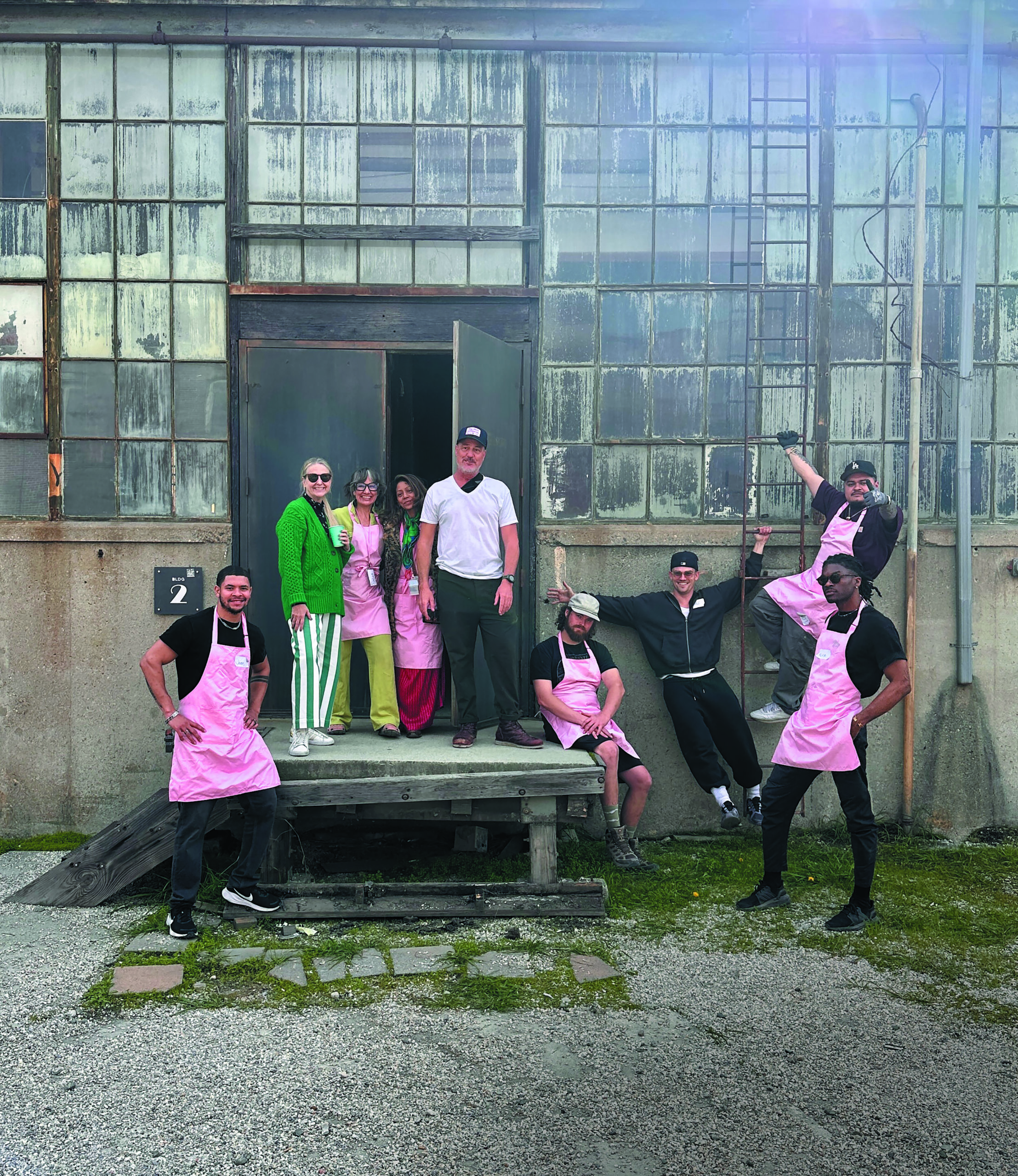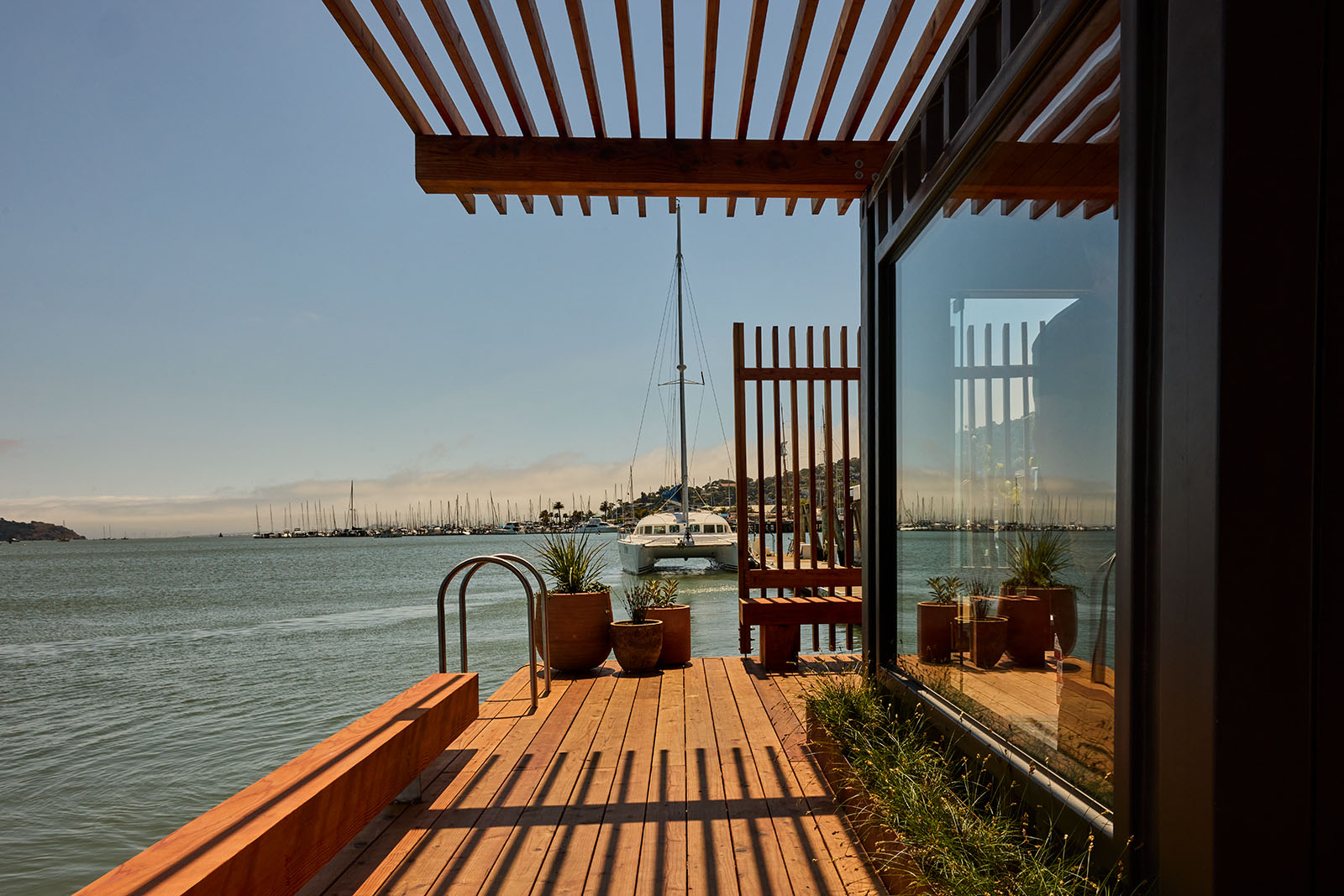Turning Over a New Leaf
Author:Lindsey ShookPatricia Benner reveals possibilities of California’s natural landscape while keeping sustainability top of mind.

“You can have a garden that conforms to all the stringent local requirements that also meets the needs you have from the garden,” says landscape artist Patricia Benner on the challenges of balancing the state’s environmental mandates against personal design choices.
Threading her work through her aesthetic and sustainable concerns, Benner creates outdoor spaces that are environmentally conscious, inviting, mystical and practical. She curates lush spaces where one can dine and nap, meditate and entertain, imploding the notion that wood- chipped landscapes dotted with lonely, spiky cacti are the only option.
Her work in Montecito solidified the interests that drive her work: seasonality, drought tolerance, intimate spaces and primitive gardens. “Montecito is quite strict about what you can and cannot plant,” she says. That project, situated between two dry streambeds, required that she limit plantings within 100 feet of the streambeds to California natives, especially riparian plants, which can tolerate California’s wet and dry extremes. Her research led to a revelation. “I thought, Wow, these are gorgeous.” Now she encourages clients to use California natives in every project. “There was an ‘aha!’ moment when I started doing this and realized that it’s not onerous to meet these requirements,” says Benner. “There’s so much you can use that’s wonderful, that’s acceptable and that falls within the guidelines.”
Though it took a few years for her to understand it, Benner, who’s originally from New Jersey, delights in California’s subtle seasons. The ebb and flow—of blooms and flowers, and even deciduous plants—can be orchestrated to provide an endlessly changing source of beauty and delight. “You can make a beautiful composition in a garden without any flowers, with just the foliage of the plants, using compatible and contrasting foliage to bring the whole composition to life.”
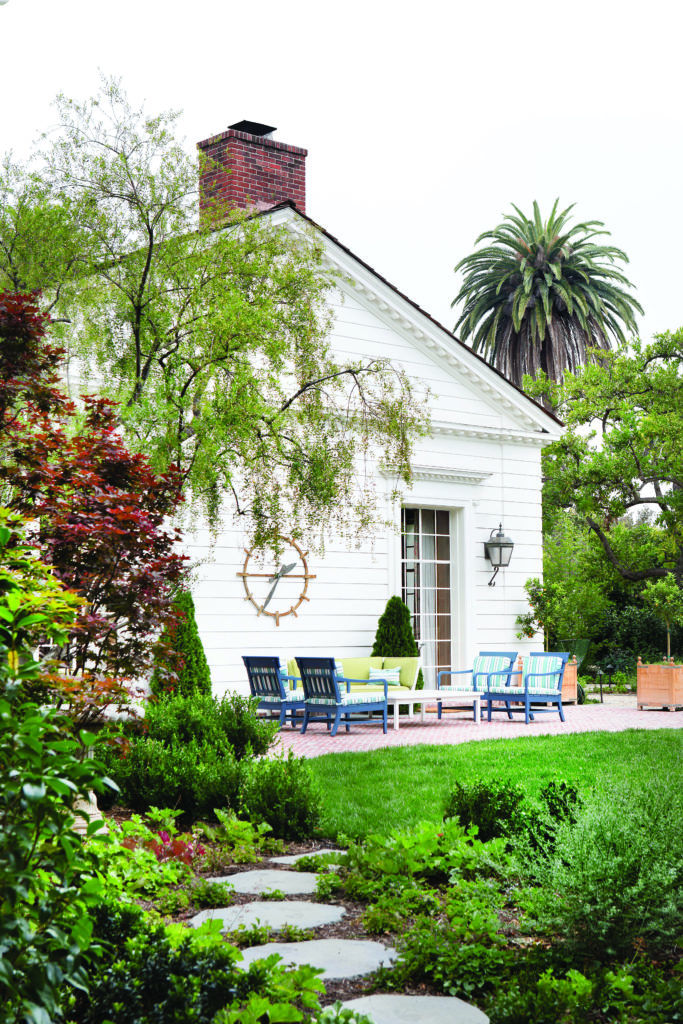
OUTDOOR ROOM DESIGN IN HANCOCK PARK
“This project is very much a garden of rooms,” says Benner of this Hancock Park residence. A perpetual student, Benner notes that the form is common in historical gardens from the Middle East to Europe to England. It translates perfectly to California, where the garden is an extension of the home. “There’s an overall unity to the spaces within the garden, and looking from one to another creates a sense of depth and mystery,” she explains. “Each area has its own character, and paradoxically, when you divide up the garden and layer it, you make it feel bigger.”
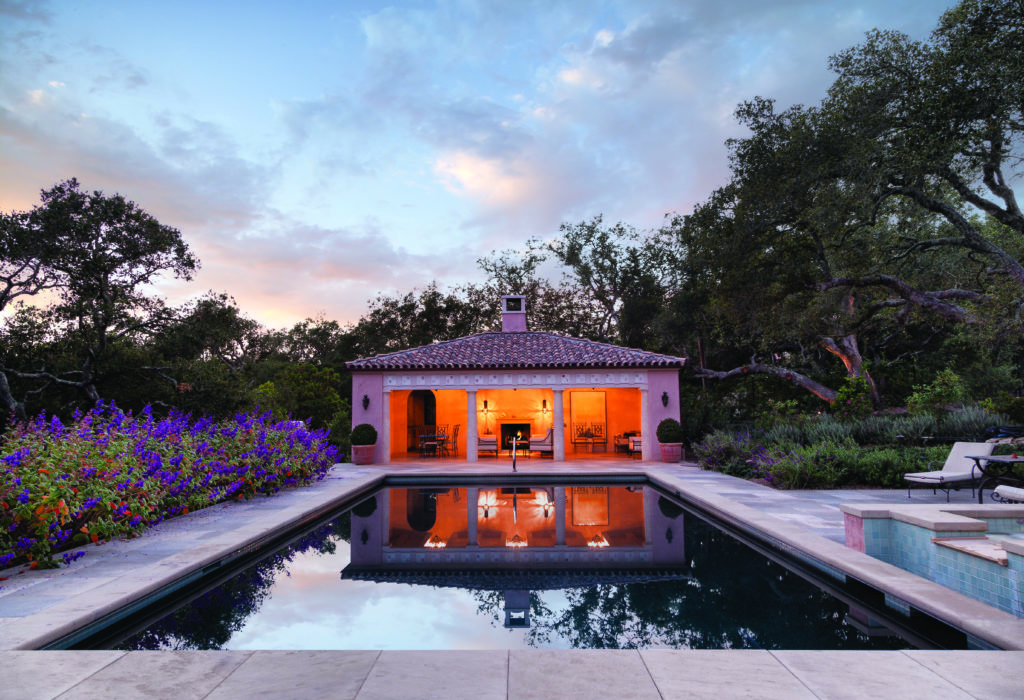
SUSTAINABLE, NATIVE DESIGN IN MONTECITO
This property housed an old oak grove that intertwined with several clearings. “The grounds had to be landscaped to respect the historic oaks, so I used California natives underneath,” Benner notes. “Then around the house, which was more open and Tuscan in style, I installed an Italian palette of Mediterranean plants including rosemary and cypress.” Of the rose trellis, Benner says, “You don’t have to completely eliminate medium-water plants like roses if you have enough of the drought-tolerant plants to balance them.”

Photo courtesy of Banner Landscape Design.
DROUGHT-TOLERANT, LAWN- LESS DESIGN IN BRENTWOOD “In a garden that is predominantly low water, you can use medium-water plants, like roses or fruit trees, if you balance them with enough plants requiring low water in the palette,” says Benner. In this garden, drought- tolerant plants, including rosemary, thyme and lavender, climbing plants, hedges and olive trees offer an impression of wild, luxuriant beauty when paired with a ground cover of gravel and pavers. “While it’s not in the traditional places you’d see it, such as on the ground,” says Benner, “you’re aware of tons of green around you.”
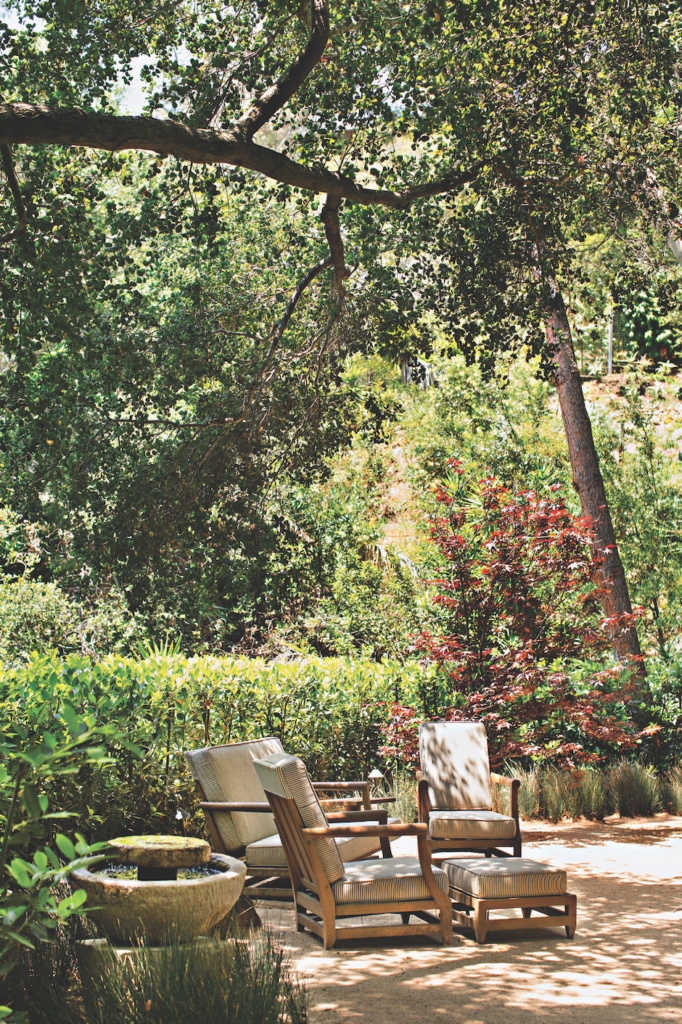
Photo by Karyn Millet.
FIRE-PREVENTION IN MANDEVILLE CANYON
Creating a garden in a fire-prone area entails paying attention to
plant spacing, plant selection and plant maintenance, “particularly within the first 30 feet of the house,” says Benner. “It’s keeping your plants from being dried out, and not spacing trees too close together.” She also counsels staying away from oily plants and trees like eucalyptus and pine, or anything that’s got a lot of dense foliage that tends to die and hang on the plant, and instead focus on plants that have a high water content. Some of her favorites include ceanothus (wild lilac), mimulus (monkey flower), trichostema ianatum (woolly blue curls), many salvias (sages) and quercus agrifolia (California live oak). “Those don’t burn as rapidly.”


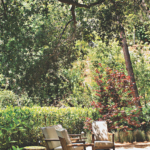


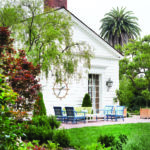

 Creating intimate outdoor spaces with drought tolerant materials is a standard practice at Benner Landscape Design.
Creating intimate outdoor spaces with drought tolerant materials is a standard practice at Benner Landscape Design.
